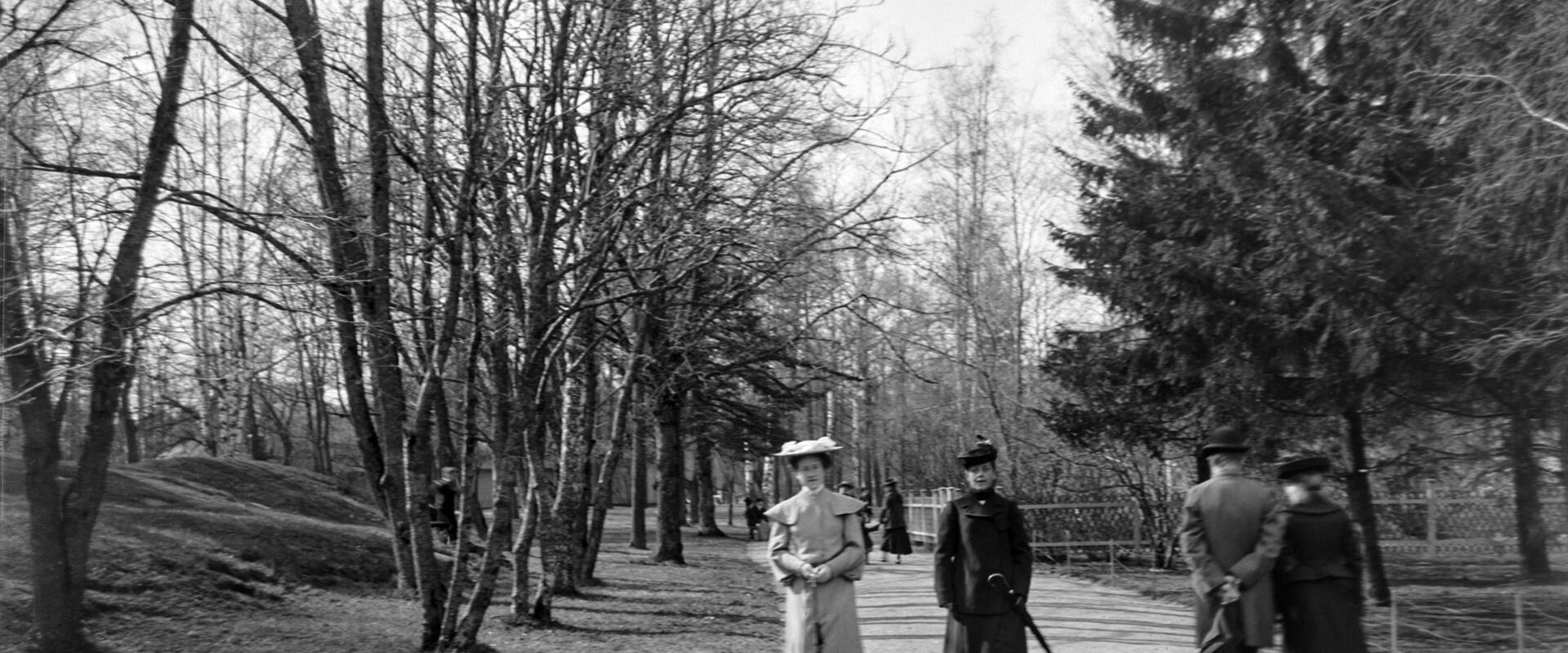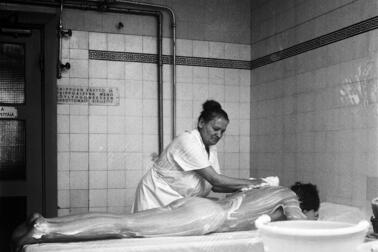Travel destination
Spa life, spa water and sea baths were all the rage among the 19th century high society, and Saint Petersburg was no exception. The Emperor of Russia was concerned about the wave of revolutions in 1830 and new ideas, and he therefore banned the country’s nobility from travelling to the spas of Central Europe. Led by factory owner Henrik Borgström, some businessmen in Helsinki saw this as an opportunity, and in 1834 they established a limited liability company to create a spa resort in what is now Kaivopuisto park.
Healthcare and pleasure
Regular steamship traffic between Saint Petersburg, Tallinn and Helsinki started in 1837. At the time, all three cities were part of the Russian Empire. The route was particularly attractive to wealthy Saint Petersburg residents, for whom Helsinki was a suitably exotic yet domestic destination, not dissimilar to what the Åland islands are to Helsinki residents nowadays.
Kaivopuiston kylpylä spa was opened in 1838. It centred on the Kaivohuone restaurant, where people drank spa water as instructed by their doctors. There was actually no spring at the spa, and the mineral water came from the factory of chemist Victor Hartwall. Merikylpylä at the shoreline offered bath treatments and the opportunity to wade in the sea under the shelter of a bath house. In between treatments, people walked around the spa’s park that had been painstakingly built on the rugged seashore cliffs. The evening programme included concerts and dancing in the Kaivohuone restaurant. Villas were built on the cliffs of the eastern part of the park to accommodate the spa guests.
Kaivopuisto was initially a great success visited by scores of gentry from Saint Petersburg and the Baltic states. However, already in the 1840s and 1850s, cholera epidemics and the Crimean War drove away the upper-class tourists, and the spa was instead visited by Finnish public officials and bourgeoisie. New customers were attracted with entertainment, popular music and theatre. Due to the financial difficulties of the spa company, the park deteriorated badly, and when the lease expired in 1886, the City of Helsinki took over the area and sold villa plots from it to new owners. Only two of the original villas of the spa remain: Kalliolinna and Villa Kleineh. When Finland became independent, the area became popular also among embassy staff.
A park for all residents
At the turn of the 19th and 20th century, Kaivopuisto was heavily redeveloped into an English landscape garden in keeping with the ideals of the time. The open views of the sea, vantage points and wide grassy fields where parties and events were arranged invited the middle class to enjoy themselves. Finland’s first playground for children was built. As the park culture gradually relaxed, Kaivopuisto became a memorable sledding and skiing area for children.
The park has also been a stage for different types of urban culture. In the 1970s, the music association Elävän musiikin yhdistys ELMU started to arrange popular festivals in Kaivopuisto, featuring top Finnish artists. Kaivopuisto has also been an important site for May Day celebrations since the turn of the 19th and 20th century. Even today, the park fills up early on May Day with city residents and their picnic baskets and groups of students.
At the highest point of the park, residents can also observe the sky: the observatory of the Ursa astronomical society is at the top of the hill. The observatory was opened in 1926, and the association still arranges events there to give Helsinki residents a chance to familiarise themselves with the stars and the Sun.







